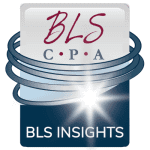 A new year means lots of new changes. In a message from the IRS’s Tax Exempt and Government Entities (TE/GE) Division, the IRS is providing updates regarding compliance strategies, improved processes, and useful tips that will ensure you are on the right track for a productive and compliant year.
A new year means lots of new changes. In a message from the IRS’s Tax Exempt and Government Entities (TE/GE) Division, the IRS is providing updates regarding compliance strategies, improved processes, and useful tips that will ensure you are on the right track for a productive and compliant year.
In FY19 the IRS plans to continue its use of the new Tax-Exempt Organization Search (TEOS) tool that creates a quick and efficient way for users to check certain information regarding any nonprofits’ tax status and filings. They also plan to continue and expand the use of Pay.gov, making it easier for you to make your online payments to the IRS.
Overall, the IRS’s biggest area of improvement is to refine the approach for compliance strategy, which ensures there is a focus on the highest priority areas so that the tax system is protected. Throughout FY18 there was growth resulting in a handful of new and approved compliance strategies and compliance strategy cases. The IRS hopes to continue to evolve their compliance strategy approach and expand the six areas of their compliance program.
Compliance strategies, the first for the six areas of the TE/GE compliance program, are issues that are submitted and approved by the TE/GE’s Compliance Governing Board. Once they are approved they are worked on based on rank of importance. As more issues become approved, the higher priority strategies can replace previously established ones if the IRS feels they will be more beneficial. Strategies will continually be updated and refined.
Current Approved 2019 Compliance Strategies for Exempt Organizations include:
- IRC 501( c)(7) entities: Focus on investment and nonmember income, nonfilers of Form 990-T, Exempt Organization Business Tax Return, by tax-exempt social and recreational clubs
- IRC Section 4947(a)(1) Non-exempt Charitable Trusts (NECTs): Organizations that under-report income or over-report charitable contributions
- Previous for Profit: Switch from profit-oriented entities to IRC section 501( C)(3) organizations.
- Private benefit and inurement: Organizations show indicators of potential private benefit or inurement to individuals or private entities, including private foundation loans to disqualified persons
- Early retirement incentive plans: Determine whether federal, state, or local governmental entities that provide cash and various other options to employees as an incentive for early retirement have applied property tax treatment to these benefits.
- Forms W-2/1099 matches: Compare payments reported on Form 1099, Miscellaneous Income, with wages reported on form W-2, Wage and Tax Statement, and subject to Federal Insurance Contribution Act (FICA) tax and income tax withholding
- Notice CP 2100 (backup withholding): Mismatched or missing taxpayer identification numbers on Form 1099 may indicate failure to comply with backup withholding requirements
- Worker classification: Misclassified workers may result in incorrectly treating employees as independent contractors
Management and board members of nonprofit organizations should take the opportunity to familiarize themselves with the current IRS compliance strategies and evaluate their organizations’ risk of noncompliance. As always, consult your trusted CPA with questions.
Photo By 1Flatworld (License)
